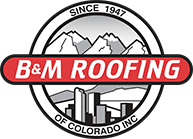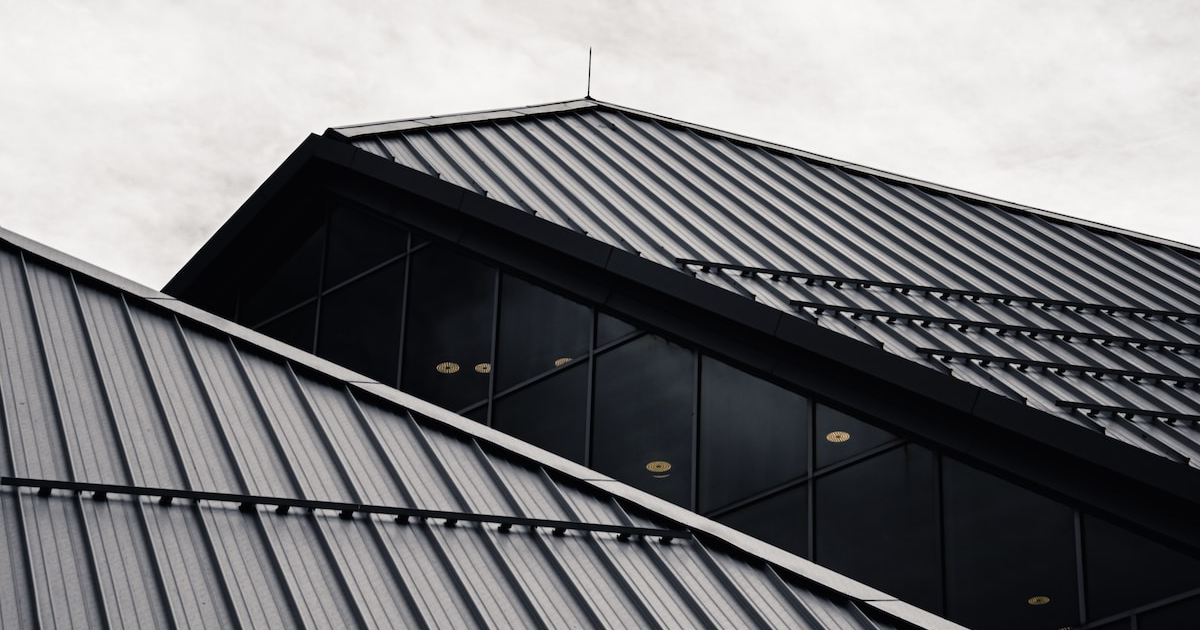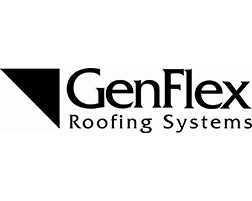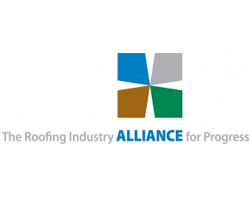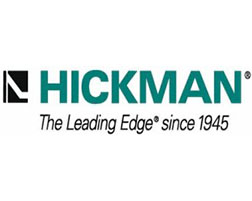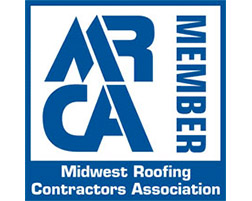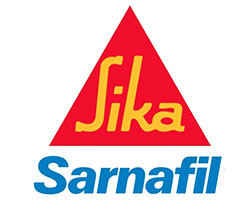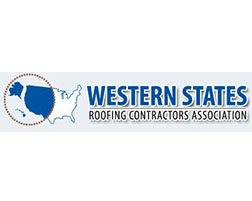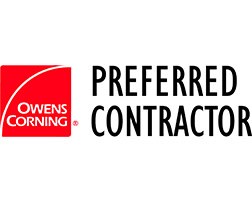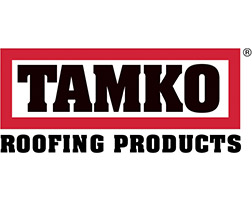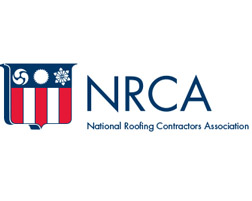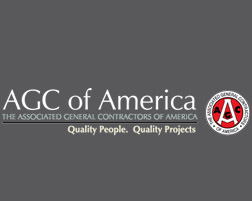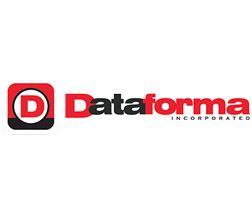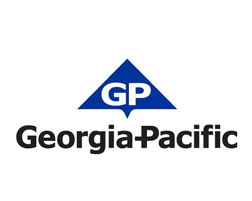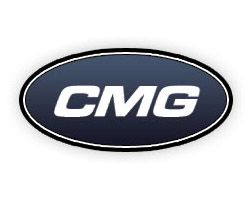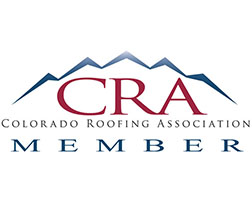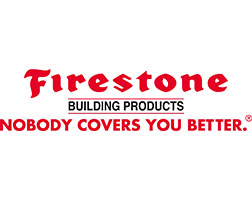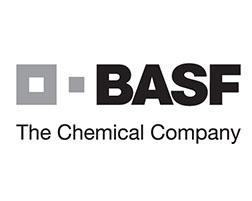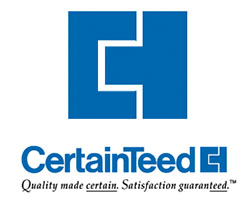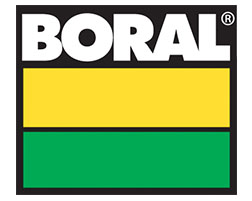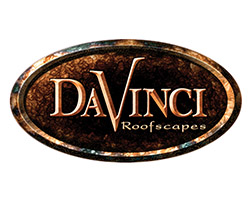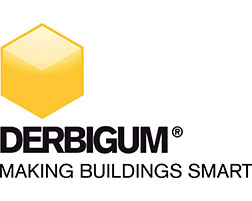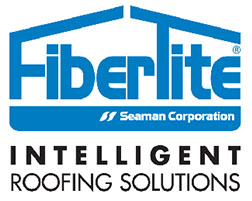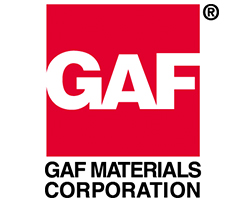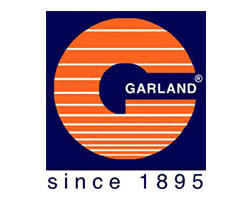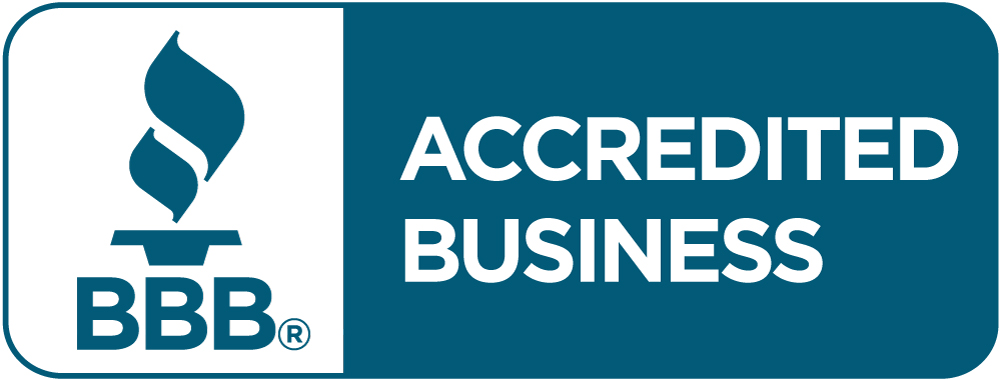Metal Roof vs. Shingles
In the picturesque landscape of Denver, Colorado, where homes and businesses are often exposed to diverse weather conditions, the choice of roofing material becomes paramount. From scorching summer suns to unexpected hail storms, a roof must be resilient, durable, and efficient. Among the numerous roofing options available, two have consistently dominated discussions and considerations: metal roofs and asphalt shingles.
Metal roofs, with their sleek appearance and undeniable durability, have been a favorite for those looking for longevity and a modern touch to their property. On the other hand, asphalt shingles, with their classic appeal and cost-effectiveness, have been a staple in American homes for decades.
But how does one decide between the two? Is it merely a matter of aesthetics, or are there deeper factors at play? As we delve into the “Metal roof vs. shingles” debate, we aim to shed light on the pros and cons of each, offering homeowners and business owners in Denver a comprehensive guide to making an informed decision.
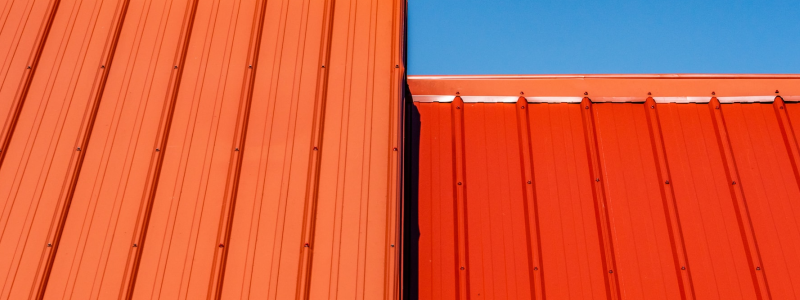
Pros of Metal Roofs: Are Metal Roofs Worth?
When considering the roofing options for your home or business it’s essential to weigh the advantages of each material. Metal roofs, in particular, have gained popularity for several compelling reasons:
- Durability: One of the most significant benefits of metal roofs is their exceptional durability. Unlike other materials, metal can withstand extreme weather conditions, from heavy snowfall to hail storms. This resilience ensures that your roof remains intact and functional for years to come. Metal roofs can offer a 10-25% reduction in cooling costs due to their ability to reflect the sun’s UV and infrared light rays.
- Energy Efficiency: Metal roofs are known for their energy-saving properties. Their reflective surfaces can deflect sunlight, reducing the amount of heat absorbed by your home. This means that during the hot summer months, your home remains cooler, leading to significant savings on air conditioning costs.
- Variety of Styles: Gone are the days when metal roofs were limited to a few designs. Today, they are available in a plethora of styles, colors, and finishes, allowing homeowners to choose a design that complements their property’s aesthetic.
- Eco-Friendly: Metal roofs are sustainable and environmentally friendly. Most metal roofing materials are made from recycled content, and once they reach the end of their lifespan, they can be recycled again, reducing landfill waste.
- Fire Resistance: Metal roofs are non-combustible, making them highly resistant to fire. This feature is especially beneficial in areas prone to wildfires, providing an added layer of protection to your property.
- Low Maintenance: Unlike other roofing materials that may require regular upkeep, metal roofs demand minimal maintenance. Occasional cleaning and inspection are generally all that’s needed to keep them in optimal condition.
Cons of Metal Roofs: Is A Metal Roof Cheaper Than Shingles?
When considering “Metal roof vs. shingles”, it’s essential to understand the potential drawbacks of metal roofing. While metal roofs offer numerous benefits, they also come with their own set of challenges:
- Initial Cost: Metal roofs tend to have a higher upfront cost compared to asphalt shingles. This can be a significant factor for homeowners and business owners working within tight budgets. However, it’s crucial to weigh this initial investment against the long-term savings and durability that metal roofs provide. Some sources highlight the affordability aspect, noting that metal roofs can be two or three times more expensive than other roofing materials.
- Noise: One common concern with metal roofs is the noise during heavy rain or hailstorms. The sound of raindrops or hail hitting the metal surface can be louder than on traditional shingle roofs. Proper insulation can mitigate this issue, but it’s a factor to consider, especially in areas prone to frequent rain.
- Potential for Denting: While metal roofs are durable, they can be susceptible to denting, especially in areas with frequent hailstorms. It’s essential to choose a high-quality metal roofing material to reduce the risk of denting.
- Expansion and Contraction: Metal roofs can expand and contract with temperature changes. Over time, this can lead to loosening of fasteners or other components, requiring additional maintenance.
- Specialized Installation: Installing a metal roof requires specialized skills and tools. It’s crucial to hire experienced professionals to ensure the roof is installed correctly, which can add to the overall cost.
- Aesthetic Concerns: Some homeowners prefer the traditional look of shingles over the more modern appearance of metal. While metal roofing comes in various styles and colors, it might not suit every architectural style.
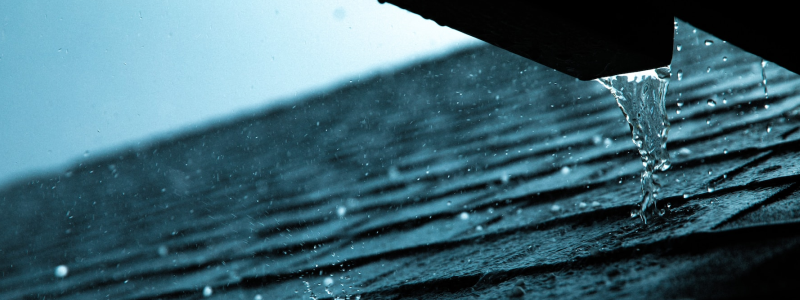
Pros of Shingles
In the debate of “Metal roof vs. shingles”, asphalt shingles stand out for several reasons that appeal to homeowners and business owners alike. Here are the primary advantages of shingle roofs:
- Affordability: One of the most significant benefits of shingle roofs is their cost-effectiveness. Compared to metal roofs, asphalt shingles are generally more affordable, making them a popular choice for those on a budget.
- Ease of Installation: Shingle roofs are relatively straightforward to install. Their flexibility and lightweight nature mean that they can be fitted quickly, reducing labor costs and installation time.
- Variety of Colors and Styles: Asphalt shingles come in a wide range of colors and styles, allowing homeowners to choose a design that complements the aesthetic of their property. Whether you’re looking for a traditional or contemporary look, there’s likely a shingle style to match.
- Repairability: If a section of your shingle roof gets damaged, it’s often easier and less costly to repair or replace individual shingles than to fix a metal roof.
- Sound Insulation: Unlike metal roofs, shingle roofs tend to offer better sound insulation, ensuring that noise from rain or hail is less intrusive.
- Familiarity: Given their popularity, many roofing contractors are familiar with shingle installation and repair, ensuring that homeowners have a wide range of experts to choose from.
Cons of Shingles
When considering “Metal roof vs. shingles”, it’s essential to understand the potential drawbacks of shingle roofs. Here are some of the primary disadvantages:
- Shorter Lifespan: While shingle roofs are affordable, they typically have a shorter lifespan than metal roofs. On average, asphalt shingles last between 15 to 30 years, depending on the quality and maintenance. Some sources even claim that they can last for over 50 years.
- Maintenance Requirements: Shingle roofs require more frequent maintenance to ensure their longevity. This includes regular inspections for damage, cleaning to remove debris and algae, and replacing damaged shingles.
- Vulnerability to Extreme Weather: Shingles can be damaged by high winds, hail, and other extreme weather conditions. They are also more susceptible to algae and moss growth, which can affect their appearance and functionality.
- Environmental Concerns: Unlike metal roofs, which are often made from recycled materials and are recyclable at the end of their life, asphalt shingles contribute to landfill waste.
- Potential for Increased Insurance Premiums: Some insurance companies may increase premiums for homes with shingle roofs, especially in areas prone to severe weather conditions.
- Heat Absorption: Shingles, especially darker ones, can absorb heat, which can increase cooling costs during the summer months.
Lifespan and Durability
When comparing “Metal roof vs. shingles” in terms of lifespan and durability, it’s crucial to understand the longevity of each roofing material.
How Long Do Metal Roofs Last:
Metal roofs are renowned for their impressive durability and extended lifespan. Depending on the material and maintenance, metal roofs can last between 40 to 70 years. Their resilience is attributed to their ability to withstand extreme weather conditions, from high winds to hailstorms. Furthermore, metal roofs are fire-resistant, moisture-proof, and inaccessible to most pests, ensuring their longevity.
How Long Do Shingles Last:
While asphalt shingles are widely popular due to their affordability and ease of installation, their lifespan is typically shorter than metal roofs. On average, asphalt shingles can last between 12 to 20 years, depending on the quality, maintenance, and environmental factors. Factors such as extreme weather conditions, mold, mildew, and rot can affect the longevity of shingle roofs.
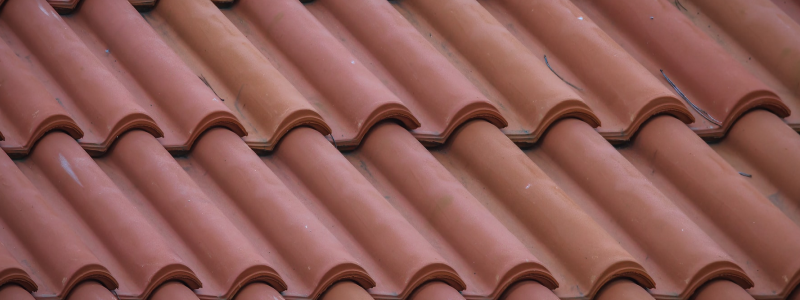
Final Recommendations
In the debate of “Metal roof vs. shingles”, both roofing materials present their unique advantages and challenges. Metal roofs are environmentally friendly, durable, and offer significant energy savings. On the other hand, shingles are widely recognized for their affordability, ease of installation, and versatility in design.
However, when considering the long-term benefits, metal roofs often come out ahead due to their extended lifespan, reduced maintenance needs, and energy efficiency. For homeowners and business owners in Denver, Colorado, it’s essential to weigh the initial costs against the long-term savings and benefits.
In conclusion, while shingles might be a suitable choice for those on a tight budget or with specific aesthetic preferences, metal roofs offer undeniable advantages in durability, lifespan, and eco-friendliness. If you’re contemplating a roofing project in Colorado, we recommend consulting with B&M Roofing. Our team of experts will provide guidance tailored to your specific needs, ensuring you make an informed decision for your residential or commercial property.
Winter Roof Maintenance Tips
Before winter arrives in full force, it is crucial to prioritize the maintenance and care of your roof. The cold weather, snow, and ice can pose significant challenges and potentially lead to serious roof damage if not properly addressed.
In the following paragraphs, we will provide essential tips for winter roof maintenance to help you prevent common roof problems, identify signs of leaks and damage, minimize ice dams, choose durable roofing materials, conduct thorough roof inspections, and maintain your gutters and downspouts. By implementing those tips, you can ensure the longevity and integrity of your roof throughout the winter season.
One of the key aspects of effective winter roof maintenance is conducting a thorough inspection before the cold weather sets in. This allows you to identify any existing issues and address them promptly. However, it is important to note that inspecting and maintaining your roof during winter can be challenging and dangerous, especially if you’re not experienced or equipped with the necessary tools and safety gear.
Contact the B&M Roofing professional team for your roof inspection. We have the expertise and equipment to perform simple and complex roof maintenance and replacement procedures.
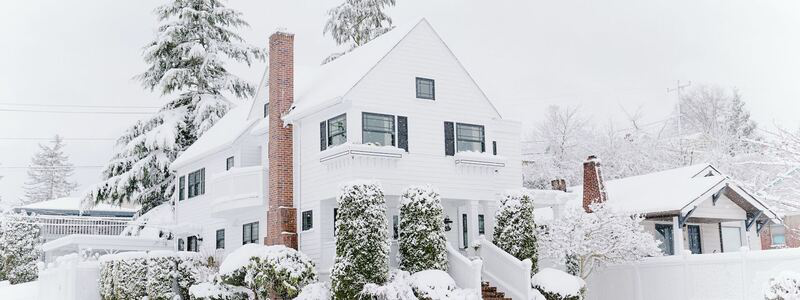
Common Roof Problems in Winter
Winter weather can worsen existing roof problems and create new challenges. It is essential to be aware of common roof issues during this season to address them promptly. Some common problems include:
- Ice Dams: Ice dams form when snow on the roof melts, then refreezes at the roof’s edges, creating a barrier that prevents proper drainage. This can lead to water seeping under the shingles and causing leaks and damage.
- Roof Leaks: Cold temperatures, snow, and ice can cause roofing materials to contract, creating gaps and potential points of entry for water. Leaks can occur when ice or snow melts and finds its way into these vulnerable areas.
- Snow Load: Snow accumulation can put excessive weight on the roof, leading to stress and potential structural damage if the roof is not properly designed or maintained.
- Condensation: Temperature differences between the warm interior of your home and the cold exterior can create condensation in the attic. The moisture can lead to mold growth, compromising not only the integrity of the roof but also making the house interior an unpleasant space to live in.
Signs of Roof Leaks and Damage in Winter
Identifying signs of leaks and damage before winter is crucial to address issues promptly and prevent further deterioration. Look out for the following signs:
- Water Stains: Check the interior walls and ceilings for water stains or discoloration, as they often indicate a roof leak.
- Dripping or Water Pools: If you notice dripping water or pools of water in your attic or ceiling, it clearly indicates a roof leak.
- Icicles and Ice Buildup: While icicles may seem harmless, they can be a sign of poor insulation and the potential for ice dams to form.
- Damaged or Missing Shingles: Inspect your roof for any damaged or missing shingles. Strong winds and ice buildup can cause shingles to become loose or get dislodged.
- Sagging or Uneven Roof Surface: A sagging or uneven roof surface can indicate structural issues caused by snow load or other underlying problems.

Tips for Preventing and Minimizing Ice Dams on the Roof
Ice dams are a common winter problem that can lead to significant roof damage if not addressed promptly. The following tips can help you prevent and minimize ice dams.
Insulate Your Attic
Proper attic insulation helps maintain a consistent temperature and prevents heat from escaping, reducing the risk of ice dams. Ensure that your attic has sufficient insulation and seal any air leaks.
Ventilate Your Attic Regularly
Proper attic ventilation helps regulate temperature and reduces moisture buildup. It allows for the escape of warm air, preventing it from melting snow on the roof and contributing to ice dam formation.
Remove Snow
Safely remove snow from your roof using a roof rake or hire professionals to do the job. Clearing snow helps prevent its accumulation and minimizes the likelihood of ice dams forming.
Install Ice and Water Shield
Consider installing ice and water shield membranes along the eaves and valleys of your roof. This provides an additional layer of protection against water infiltration caused by ice dams.
How to Choose the Right Roofing Materials for Winter Durability
Choosing the right roofing materials is essential for ensuring durability and performance during the winter season. Consider the following factors when selecting roofing materials:
- Material Durability: Opt for materials known for their durability and resistance to extreme weather conditions. Asphalt shingles, metal roofs, and slate tiles are popular choices due to their ability to withstand harsh winters.
- Slope and Pitch: Consider the slope and pitch of your roof. Steeper roofs allow snow to slide off more easily, reducing the risk of excessive snow accumulation and potential damage.
- Insulation Properties: Some roofing materials offer better insulation properties than others. Insulated metal panels, for example, provide excellent thermal resistance, helping to maintain a consistent temperature inside your home.
- Get Professional Advice: Seek advice from roofing professionals who can assess your needs and recommend the most suitable roofing materials for your climate and budget.
Schedule an inspection by the B&M Roofing team to discuss ways to improve your roof and ensure its longevity and safety.
Roof Inspection and Maintenance Before Winter
Roofs take a beating from the weather, and that weather can be harsh in some states, like Colorado. Roofs are one of the most important parts of a home or building because they protect the structure from natural elements such as wind, rain, ice, snow, extreme heat, and hail, but they can be damaged by those elements over time. Before winter arrives, conducting a comprehensive roof inspection and performing necessary maintenance tasks is crucial.
Hire a Professional Roofing Contractor
Consider hiring a professional roofing contractor, such as B&M Roofing, to inspect your roof thoroughly. They have the training to do it safely and the expertise to identify potential issues and provide appropriate recommendations.
Check Flashing and Sealants
Inspect the flashing around chimneys, vents, and skylights for any signs of damage or deterioration. Ensure that all sealants are intact and in good condition.
Clean Gutters and Downspouts
Clear your gutters and downspouts of leaves, debris, and any blockages. Debris uncleared from your roof can clog gutters and cause damage to your property. When gutters are clogged, rain and melted snow cannot drain properly, leading to a buildup of standing water. This can cause interior leaks and shorten the lifespan of your roof. In addition, the extra weight of the debris and water can bend your gutters or tear them away from the roof.
Trim Overhanging Branches
Trim any overhanging tree branches near your roof to minimize the risk of damage from falling limbs and reduce the accumulation of leaves and debris.
Preventing Roof Collapses Due to Heavy Snow
In regions with heavy snowfall, the weight of accumulated snow can pose a risk of roof collapse. Take these precautions to prevent roof collapses:
- Ensure Proper Roof Design and Construction: When constructing or renovating your home, ensure that the roof is designed to handle the expected snow load in your area. Consult with professionals to determine the appropriate roof pitch and structural requirements.
- Remove Snow from the Roof: Safely remove accumulated snow from your roof using a roof rake or hire professionals to do the job. Regular snow removal helps alleviate the excess weight on your roof.
- Strengthen Structural Support: Consider reinforcing your roof’s structural support if you live in an area prone to heavy snowfall. Consult with a structural engineer or a professional roofing contractor, such as B&M Roofing, to assess and reinforce your roof if necessary.

Gutter and Downspout Maintenance
Proper gutters and downspouts maintenance is essential for effective water drainage and preventing ice dams. Follow these tips:
- Clean your gutters at least twice a year, before and after winter, to remove leaves, debris, and any blockages. Clogged gutters can lead to water backup and potential damage to your roof.
- Regularly inspect your gutters and downspouts for signs of damage, such as cracks or sagging. Address any issues promptly to ensure proper water flow.
- If you haven’t done this yet, consider installing gutter guards to prevent debris from accumulating in your gutters and minimize the need for frequent cleaning.
- Check your downspouts to ensure they are properly connected and direct water away from your house’s foundation. Consider adding extensions if necessary to ensure proper water drainage.
Winter Roof Maintenance Tips | B&M Roofing Colorado
Proper winter roof maintenance is crucial for protecting your home and ensuring the longevity of your roof. You can safeguard your roof during the cold season by preventing ice dams, choosing the right roofing materials, conducting thorough inspections, and maintaining your gutters and downspouts.
When it comes to roof inspection and maintenance, you can rely on the expertise of the B&M Roofing team for professional guidance and quality services.
With proper preparation and maintenance, your roof will withstand extreme weather, providing peace of mind and a comfortable living environment.
Roof Replacement by Professionals | B&M Roofing
B&M Roofing has extensive experience in residential and commercial roofing, with a Colorado company providing quality service throughout the Centennial State since 1947.
The premier Colorado commercial roofing contractor uses only the highest quality roofing shingle suppliers: GAF and Owens Corning. We offer a wide range of colors and styles to choose from, ensuring that we can match the right roof shingle color to any home’s style.
We work with brands like GAF and Owens Corning to offer you a variety of roofing materials and colors to choose from and allow you to find the perfect color for your home. B&M is always available to help give your home’s roof the beauty it deserves.
Pros and Cons of Turbine Roof Vents
Turbine roof vents, often referred to as “whirlybirds,” have become a popular choice for homeowners and business owners in Denver, Colorado, who seek efficient ventilation solutions for their properties. Proper ventilation is crucial for any building, as it plays a pivotal role in maintaining a comfortable indoor environment, prolonging the lifespan of roofing materials, and ensuring energy efficiency. The pros and cons of turbine roof vents is a topic of interest for many, especially those who are considering installing or replacing their current ventilation system. These vents harness the power of wind to expel hot air from the attic, making them both energy-efficient and environmentally friendly. As we delve deeper into this topic, we’ll explore the numerous advantages and potential drawbacks of using turbine roof vents, providing valuable insights for homeowners and business owners alike.
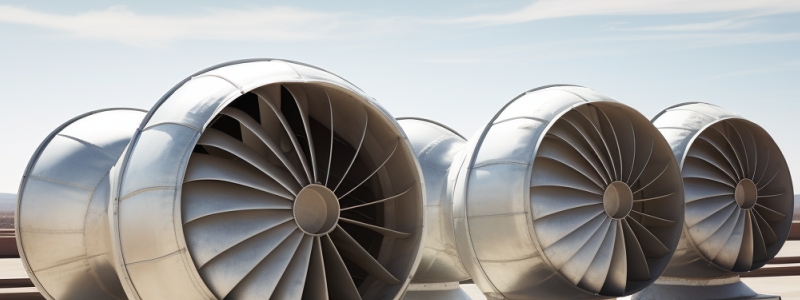
Advantages of Turbine Roof Vents
Among the pros and cons of turbine roof vents, the benefits should always come first. Turbine roof vents have gained significant traction among homeowners and business owners in Denver, Colorado, for these gains. One of the primary advantages of these vents is their energy efficiency. Unlike other ventilation systems that rely on electricity, turbine roof vents harness the natural power of the wind to operate. This not only reduces energy consumption but also translates to savings on electricity bills.
Furthermore, these vents are renowned for their effective ventilation capabilities. By drawing out hot and stale air from the attic, they promote a balanced and efficient airflow, which is crucial for maintaining a comfortable indoor temperature and preventing issues like mold and mildew growth. This article from Airflow Academy delves deeper into the benefits of turbine roof vents.
Another noteworthy advantage is their versatility. Turbine roof vents come in various sizes and designs, making them suitable for different roof types and architectural styles. Their durability is also commendable, with many homeowners reporting that their vents have withstood the test of time, even in challenging weather conditions.
Disadvantages of Turbine Roof Vents
After the advantages, the pros and cons of turbine roof vents topic must always include the most important shortcomings. It’s essential to understand their potential drawbacks before making an installation decision. Here are some of the disadvantages associated with turbine roof vents:
- Reliant on Winds: Turbine roof vents harness the power of wind to expel hot air from the attic. This reliance on wind is both their strength and weakness. On calm days with little to no wind, these vents may struggle to spin, reducing their efficiency. If your home is in an area with infrequent wind, turbine vents might not be the best choice.
- Prone to Damage: Being outdoor installations, whirlybirds are exposed to various weather conditions. They can be damaged by hail, strong winds, or even rust over time. Moreover, their moving parts make them more susceptible to wear and tear compared to static roof vents.
- Aesthetic Concerns: While functional, turbine roof vents are not always the most visually appealing. Their noticeable presence on the roof can potentially reduce a home’s curb appeal, especially if they are not well-maintained or have started to show signs of aging.
- Noise Levels: Initially, turbine vents operate quietly. However, as they age, their spinning components can wear out, leading to a whirring or squeaking noise. If you start hearing such sounds, it might be an indication that the vent requires maintenance or replacement.
- Potential for Leaks: If not properly installed or if damaged, turbine roof vents can become a source of leaks. Ensuring professional installation and regular inspections can mitigate this risk.
Comparison with Other Vent Types
When considering attic ventilation, homeowners and business owners have several options to choose from. Turbine roof vents are one such option. But how do they stack up against other vent types? Let’s delve into a comparison to provide a clearer understanding:
- Turbine Roof Vents vs. Flat Roof Vents: Turbine vents harness the power of wind to expel hot air from the attic. When the wind blows, they can move more air than flat vents. However, on calm days, their efficiency might be reduced. According to Family Handyman, replacing a turbine vent with a standard flat vent is acceptable as long as the vent is adequately sized for the attic’s square footage.
- Turbine Roof Vents vs. Ridge Vents: Ridge vents run along the roof’s peak and provide passive airflow. Unlike turbines, they don’t have moving parts and rely on natural convection. While ridge vents offer a more subtle appearance, turbine vents can provide superior ventilation when powered by wind.
- Turbine Roof Vents vs. Electrically Powered Vents: Electrically powered vents use fans to move air out of the attic. They can be set to activate at specific temperatures or humidity levels, ensuring consistent ventilation. While they offer precise control, they also consume electricity, unlike wind-powered turbine vents.
- Maintenance and Longevity: Turbine vents have moving parts, which can wear out over time. In contrast, static vents like ridge vents require minimal maintenance. However, with proper care, turbine vents can last for 20-25 years.
- Aesthetics: While turbine vents are functional, they might not be the most visually appealing option for every homeowner. Other vent types, like ridge vents, offer a more integrated look with the roofline.
- Cost: Turbine vents are generally more affordable than electrically powered vents. However, the total cost can vary based on the quality, brand, and installation charges.

Considerations for Installation of Turbine Roof Vents
When considering the installation of turbine roof vents, it’s essential to be well-informed about the various factors that can influence the success and efficiency of the venting system. Here are some key considerations to keep in mind:
- Proper Sizing: The size of the turbine vent matters. It’s crucial to choose a size that matches the square footage of your attic space. A vent that’s too small won’t provide adequate ventilation, while one that’s too large can lead to unnecessary heat loss.
- Placement: The location of the turbine vent on the roof can affect its efficiency. Ideally, it should be placed at the highest point of the roof to effectively draw out the hot air. Avoid placing vents near obstructions or in areas where they might be shaded for long periods.
- Maintenance Access: Turbine vents have moving parts, and over time, they might require maintenance. Ensure that the vent is easily accessible for cleaning, lubrication, or potential repairs.
- Weather Conditions: While turbine vents are designed to prevent rain and snow from entering, it’s essential to consider the typical weather conditions in your area. In regions with heavy snowfall, for instance, ensure that the vent has adequate clearance from the roof’s surface to prevent snow accumulation.
- Professional Installation: While it might be tempting to install a turbine vent yourself, it’s recommended to hire a professional. Improper installation can lead to leaks, reduced efficiency, and potential damage to your roof structure.
- Material Choice: Turbine vents come in various materials, including aluminum and stainless steel. Choose a material that’s resistant to rust and corrosion, especially if you live in a coastal area or a region with high humidity
Safety Precautions for Turbine Roof Vents
Turbine roof vents, while efficient and eco-friendly, come with their own set of safety considerations. Ensuring that these vents are installed and maintained correctly is crucial to prevent potential hazards and ensure optimal performance. Here are some safety precautions to keep in mind:
- Secure Installation: Turbine vents, due to their rotating nature, can become dangerous projectiles in strong winds if not securely installed. Always ensure that the vents are anchored firmly to the roof structure.
- Regular Inspections: Over time, the moving parts of a turbine vent can wear out. Regularly inspect the vents for signs of wear and tear, rust, or damage. Address any issues promptly to prevent larger problems down the line.
- Avoid DIY Installations: While there are many DIY guides available, it’s recommended to hire a professional for the installation. Improper installation can lead to leaks, reduced efficiency, and potential damage to your roof structure.
- Seal Tightness: Ensure that the seal around the turbine vent is tight and waterproof. A loose seal can allow water to seep in, leading to potential water damage inside the property.
- Noise Considerations: Some turbine vents can produce noise, especially during high winds. If noise is a concern, consider investing in vents designed to operate quietly or adding noise-reducing measures.
- Winter Precautions: In areas with heavy snowfall, ensure that the vents are cleared of snow regularly. Snow accumulation can hinder the vent’s operation and add unnecessary weight to the roof.
- Debris Clearance: Regularly check and clear the vents of any debris, such as leaves or bird nests, that might obstruct airflow.
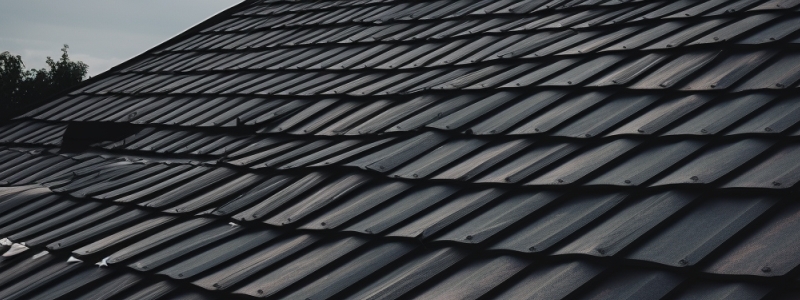
Summary
The pros and cons of turbine roof vents have been uncovered. Over the years, turbine roof vents have gained popularity among homeowners due to their efficiency and eco-friendly nature. These vents harness the power of the wind to create suction, effectively pulling air out of homes, especially in attics and crawl spaces. The primary advantage of turbine roof vents is their wind-powered operation, eliminating the need for electricity and offering significant cost savings. They also play a pivotal role in enhancing indoor air quality by expelling musty odors and contaminants.
However, like any other product, turbine roof vents come with their set of challenges. Improper installation can weaken the roof structure, and there’s a potential risk of water ingress if the seal isn’t tight. Additionally, their efficiency is contingent on windy conditions, and they can produce noise under certain circumstances. Despite these drawbacks, when installed and maintained correctly, turbine roof vents can be a valuable addition to homes, promoting energy efficiency, comfort, and roof longevity.
Should I Cover My Roof Turbines in the Winter?
For homeowners and business owners in Colorado, understanding the various components of roofing is crucial, especially when it comes to making informed decisions about maintenance and energy efficiency. One question that often arises, particularly as winter approaches, is: “Should I Cover My Roof Turbines in the Winter?” Roof turbines play a vital role in attic ventilation. But as the cold months draw near, many wonder if covering these turbines could offer additional benefits or protection. This article aims to shed light on this topic, providing you with the knowledge you need to make the best choice for your property.
Definition and Function of a Roof Turbine Vent
Roof turbines are a type of passive ventilation system designed to improve airflow within an attic space. These spinning roof vents are strategically placed on the roof to harness the power of the wind, allowing them to rotate and create a suction effect. This action draws out the hot, stale air from the attic, replacing it with cooler, fresh air from outside. The primary objective of a roof turbine vent is to regulate the temperature and moisture levels within the attic, preventing issues such as mold growth, wood rot, and damage to insulation. Proper ventilation is essential for maintaining the structural integrity of your home and ensuring energy efficiency. Roof turbines are especially beneficial in climates with significant temperature fluctuations, as they help in balancing the internal environment of the house. For more details on the mechanics of roof turbine vents, you can refer to this article.

The Role of Turbine Vents for Roofs in Different Seasons
Roof turbine vents, commonly known as “whirlybirds,” play a crucial role in maintaining the health and efficiency of your home throughout the year. Their primary function is to facilitate the circulation of air in the attic, ensuring that excess heat and moisture are expelled. During the summer months, these vents help in releasing the accumulated hot air, preventing the attic from becoming a furnace and thereby reducing the strain on your air conditioning system. Conversely, in the winter, they aid in preventing the buildup of moisture, which can lead to mold growth and damage to insulation.
It’s a common misconception that these vents should be covered during the winter to conserve heat. However, according to the U.S. Department of Energy, proper attic ventilation is essential year-round. In colder climates, especially, the warm air from your home can rise and meet the cold surface of the roof, leading to condensation. Over time, this moisture can compromise the structural integrity of the roof, promote mold growth, and even damage stored items in the attic. By ensuring that turbine vents remain open and functional during the winter, homeowners can mitigate these risks and maintain a healthier living environment.
Pros and Cons of Having Turbine Roofs
“Should I Cover My Roof Turbines in the Winter?” is a question that many homeowners and business owners ponder. To answer this, it’s crucial to understand the advantages and disadvantages of turbine roof vents.
Advantages of Turbine Roof Vents:
- Cost-Effective: Turbine roof vents are generally less expensive to purchase and install. They are also more energy-efficient as they utilize wind power, leading to potential savings on electricity bills.
- Eco-Friendly: The wind powers these vents, making them an environmentally friendly option.
- Improved Air Quality: Turbine vents can enhance the air quality inside your home by expelling musty odors and other contaminants.
- Durable and Low Maintenance: Manufacturers make these vents from high-quality materials and design them to last. They require minimal upkeep, with occasional checks to ensure they are free of debris.
- Extend Roof Life: By venting out hot air and moisture, turbine vents can prolong the life of your roof, preventing potential damage from condensation and mold.
- Not Reliant on Electricity: As they are wind-powered, turbine vents can function even during power outages.
Potential Drawbacks of Turbine Roof Vents:
- Roof Integrity: If not properly installed, turbines can weaken the roof structure, leading to potential damage.
- Water Infiltration: Damaged turbines or poor sealing can allow water to seep into the home.
- Sunlight Blockage: Incorrectly placed turbines might shadow parts of the roof, affecting the home’s temperature.
- Safety Concerns: Loose turbine blades can become hazardous projectiles in strong winds.
- Dependent on Wind: Turbine vents are most effective in windy conditions. In areas with little wind, their efficiency might be compromised.
- Noise: Over time, turbine vents can become noisy, especially if there’s wear in the bearings or if debris gets caught in the blades.
In conclusion, while turbine roof vents offer numerous benefits, it’s essential to be aware of their potential drawbacks. Proper installation and regular maintenance can mitigate most of these concerns.
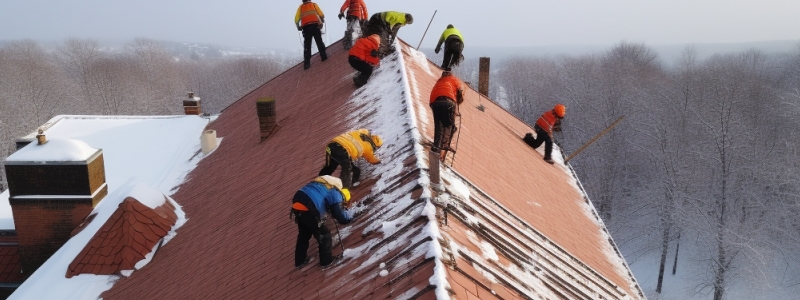
The Necessity and Benefits of Covers for Roof Turbines in Winter
Winter brings with it a host of challenges for homeowners, especially when it comes to maintaining the structural integrity and efficiency of their homes. One such challenge is the proper ventilation of the attic space, particularly in homes equipped with roof turbines.
Roof turbines play a crucial role in ensuring a healthy roofing system. Without proper ventilation, homeowners may face issues such as premature aging of the roof, damage to rafters and insulation, rotting wood, and the growth of mold and mildew. Additionally, ice dams can form, leading to increased strain on the building’s climate control, resulting in higher energy usage and expenses.
However, during the cold winter months, there’s a common misconception that covering these turbines can help conserve heat. While it’s true that covering roof turbines can reduce the amount of heat that escapes from the home, it’s essential to understand the potential dangers of doing so. Covering these vents can trap moisture in the attic, leading to various problems, including mold growth and damage to the home’s structural components.
A proper roof ventilation is vital to prevent mold, mildew, frost accumulation, wood rot, ice dams, and damage to shingles. Airflow prevents the growth of mildew or mold and helps regulate attic temperature. Extreme temperatures in the roof area can cause snow to melt and form ice on shingles and gutters. Proper ventilation during winter can extend the lifespan of the roof and its components.
Practical Advice and Considerations for Covering Roof Turbines in Colorado’s Winter Conditions
Colorado’s winter conditions are known for their harshness, with heavy snowfall, freezing temperatures, and strong winds. These conditions can pose challenges for home or commercial owners, especially when it comes to the maintenance and care of their roofing systems. “Should I Cover My Roof Turbines in the Winter?” is a question that many homeowners in Colorado grapple with. Let’s delve into some practical advice and considerations for this matter.
- Understand Colorado’s Winter Climate: Colorado experiences a continental climate, characterized by cold winters with frequent snowfall. The state’s mountainous regions can see even more extreme conditions. Homes in Colorado face exposure to moisture from snow and ice, which can seep into the attic without proper ventilation.
- Moisture Control: Proper ventilation is crucial to prevent moisture buildup in the attic. According to a guide on winter weather preparedness by the State of Colorado, moisture can lead to mold growth, wood rot, and damage to insulation. Covering roof turbines can trap this moisture, leading to these issues.
- Energy Efficiency: While covering roof turbines can conserve some heat, it’s essential to ensure that the attic remains well-insulated. This will prevent heat loss and keep the home warm without compromising ventilation.
- Regular Maintenance: Before the onset of winter, it’s a good practice to inspect the roof turbines for any signs of wear or damage. Make sure they spin freely and debris doesn’t obstruct them.
- Seek Professional Advice: If unsure about whether to cover the roof turbines, it’s always best to consult with a roofing expert or a home inspector familiar with Colorado’s winter conditions. They can provide tailored advice based on the specific needs of the home.
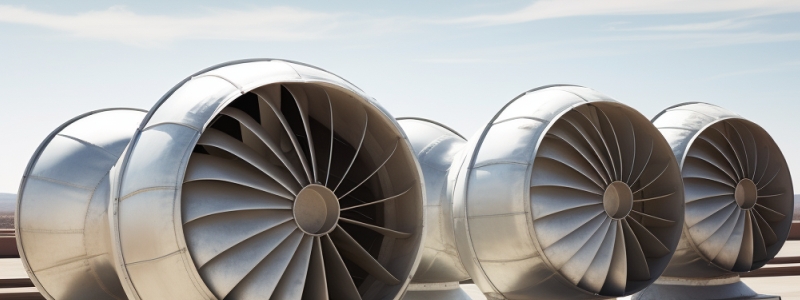
Summary
The question, “Should I Cover My Roof Turbines in the Winter?” has been thoroughly examined in this article. Roof turbines play a pivotal role in ensuring proper ventilation in homes, especially in attic spaces. Their primary function is to expel hot air and moisture, preventing potential issues like mold growth, wood rot, and damages.
Colorado’s unique winter conditions, characterized by heavy snowfall and freezing temperatures, can pose challenges for homeowners. While the idea of covering roof turbines might seem appealing to conserve heat, it’s essential to understand the broader implications. Covering these vents can trap moisture, leading to various problems, including mold growth and damage to the home’s structural components.
Proper ventilation is crucial to prevent moisture buildup and ensure the longevity of the roofing system. Homeowners should prioritize regular maintenance checks, ensuring that the turbines are free from obstructions and damage. Additionally, seeking professional advice can provide clarity and tailored recommendations based on individual home or commercial needs.
How To Tell If You Need A New Roof
A new roof is about more than just fixing the existing roofing system on your house. If you’ve never had a roofing system installed before, or if it’s been a while since your last roof was constructed, it can be difficult to know whether, or when, you need a new one.
In this article, we’ll explore how to tell if you need a new roof, some frequently asked questions, and how to get started on replacing yours.
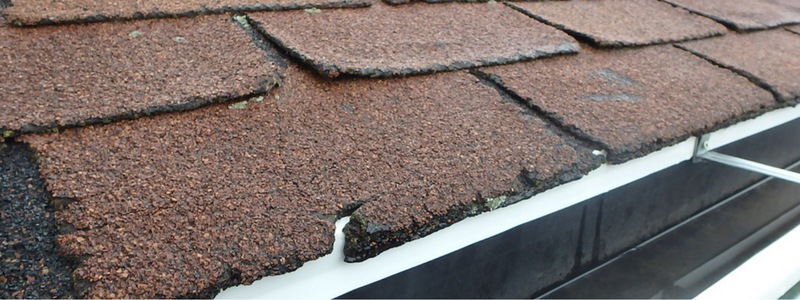
How To Tell If You Need A New Roof: Lifespan
There are a number of factors that affect your roof’s lifespan, including the materials used, quality of materials, maintenance, location, and climate.
The material used in a roof can be an indicator of how long it will last. Over time, certain types of roofs become brittle and susceptible to damage from wind or rain; therefore they may need to be replaced sooner than other types.
How long does roofing usually last?
The life expectancy of your roofing material depends on several factors, including the quality of installation, climate, and quality of materials. In general, shingles last anywhere from 20 to 50 years. Metal roofs can have a lifespan as long as 80 years. The lifespan for asphalt roofs is usually between 15 and 30 years, depending on the type and quality of the product used.
The average lifespan for a single layer of felt roofing is about 20 years. For multiple layers, it’s between 30 and 40 years in most climates (except those with extreme temperatures). If you live in an area where there are frequent snowstorms or high winds then your felt may not last that long before needing replacement because these types of weather conditions cause extra wear and tear on it over time which will eventually shorten its lifespan considerably.
For example, slate roofs have been known to last anywhere from 100 years to 250 years depending on where they’re installed. On the other hand, steel roofs have had lifespans ranging from 20-50 years depending on their quality and maintenance practices (which means regular inspections). Asphalt shingles are generally considered to be one of the least costly options but also one of the least durable – lasting only 8-12 years before they need replacement because they tend not to withstand harsh weather conditions as well as other materials like clay or concrete tile.
Is your roof older than 20 years?
One of the most quickly identifiable ways to know if you need a new roof starts when you examine the age of the existing roofing system. When your roof is older than 20 years, it is time to consider a new roof.
As a general benchmark, roofs generally last between 20 and 25 years. If your house was built before 1997 or so and you haven’t replaced the roof yet, it’s probably time to consider having a new roofing system installed.
Unsure if you need a replacement? These two things can help you determine if it is the right time:
- Shingles that are curling up at the edges (especially if there are visible signs of cracking)
- Small holes in shingles
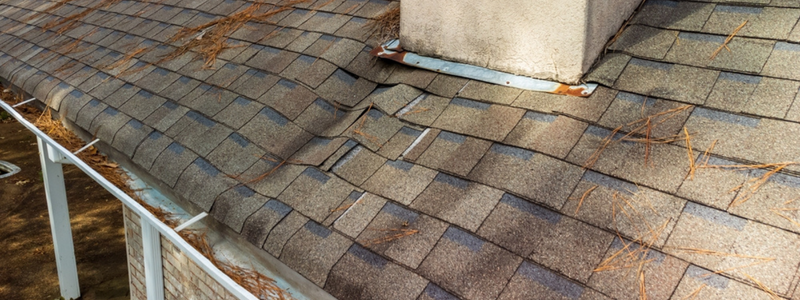
How To Tell If You Need A New Roof: Weather Damage
Water damage can be caused by several different factors. In Colorado, a storm can blow through town, causing rainwater to find its way into the attic or crawlspace under your home.
One way or another, if there’s moisture in places where it shouldn’t be (like inside of walls), then it could mean serious trouble for your roofing integrity as well as the structure of your home overall.
Are there new leaks or other signs of water damage in the house?
You can also tell if you need a new roof if you see new leaks or other signs of water damage in your house.
Heavy and recent storms can lead to needing a new roof. If you live in an area that is prone to severe weather, such as Colorado, you should inspect your roof after any storm. The best way to do this is to hire a professional roofing company that will inspect the roof for damage, but if you wish to inspect it yourself there are some things you should look for:
- Look for missing shingles or pieces of shingle that have been blown off
- Check for any splits or tears in the wood structure underneath that may be causing leaks
- Inspect vents and chimneys (if applicable)
Do you notice dark stains on your ceiling or walls from above your roofline?
Dark stains on your ceilings and walls are a sign of water damage. The stains indicate that there is an ongoing leak in the roofing system. As moisture gets into your home, it will cause mold to grow. Mold will leave dark stains on the ceiling or walls, which can lead to other problems such as allergic reactions and respiratory issues for occupants in your home.
If you notice these dark stains, it’s important to have them inspected by a professional roofer who can determine whether they’re caused by condensation or a leak in your roofing system.
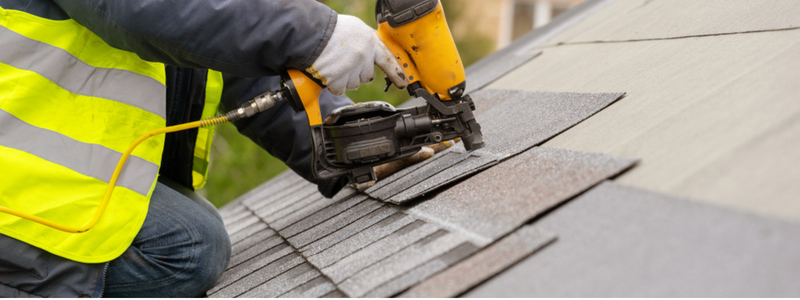
How To Tell If You Need A New Roof: Craftsmanship Issues
Is the roof sagging, warped, curved, or bubbling?
If the roof is sagging, warped, curved, or bubbling, these symptoms are indicative of a damaged roof that needs to be fixed. Sagging is caused by missing nails, while warping is usually caused by age and moisture. Bubbling can occur in areas where there’s been an excessive amount of moisture for an extended period of time.
Is there visible deterioration in the nails holding down your shingles to the roof structure?
It may be difficult to tell if your nails are loose or missing without careful inspection. If you do notice that some are broken, the shingle will likely be falling off in pieces or become totally gone.
In this case, you have a need for a new roof!
Rusty shingles and nails can also indicate that it’s high time to call in a professional roofer. While rusty nails aren’t necessarily an indication of damage yet (they could just mean that they’re old), they should still be inspected by a professional because of how much water comes into contact with them as part of your home’s plumbing system.
Are any of the shingles cracked, curled up, or broken?
If you find that any of the shingles are cracked, curled up, or broken, this is a sign that something is wrong with your roof. If you don’t replace these damaged shingles ASAP, they will start leaking and cause additional damage to your home.
FAQ: How To Tell If You Need A New Roof
How do you know when it’s time to change your roof?
Recognizing the signs of an aging or damaged roof is crucial. Look for indicators such as missing or curled shingles, frequent leaks, granules in the gutters, sagging roof valleys, and daylight coming through the roof boards. If you notice any of these signs, it might be time to consider a roof replacement.
What is the life expectancy of a roof?
The life expectancy of a roof largely depends on the material used. Asphalt shingle roofs typically last 20 to 25 years, while wooden shingles can last 30 to 40 years. Metal roofs have a lifespan of 40 to 70 years, and slate, copper, and tile roofs can last over 50 years. However, factors like climate, maintenance, and installation quality can influence a roof’s longevity.
How often should I replace the roof of my house?
The frequency of roof replacement depends on the roofing material, environmental conditions, and how well the roof has been maintained. On average, homeowners might need to replace their asphalt shingle roofs every 20 to 25 years. However, with regular inspections and timely repairs, some roofs can last longer. It’s always a good idea to consult with a roofing professional if you’re unsure about the condition of your roof.
How do you know if your roof is in bad shape?
Several signs can indicate a roof in poor condition. These include:
- Missing, broken, or curled shingles
- A large amount of shingle granules in the gutters
- Leaks or water stains on the ceiling or walls
- Sagging areas on the roof
- Moss or algae growth
- Rusted or damaged flashing
- Daylight visible through the roof boards
If you observe any of these signs, it’s advisable to get a professional roof inspection to determine the extent of the damage and the best course of action.
Get A Professional Opinion To Tell If You Need A New Roof
As dedicated roof experts, B&M Roofing offers expert services and care for commercial and residential projects across Colorado and nearby states. Whether you are looking for a new roof for your home or your office, or if you’re needing roof repair, we come equipped with extensive knowledge and comprehensive industry experience.
Our specialties include sheet metal roofs, commercial roofs, and residential maintenance and support. A team of highly trained and professional experts can provide a FREE estimate for any project.
Contact us today to learn more at (303) 443-5843.
Take a look at some of our past work so that you know how much quality workmanship goes into every job we complete.
Longest Lasting Roof Type
When it comes to investing in your property, few decisions are as significant as choosing the right roofing material. Not only does your roof safeguard your home or business from the elements, but it also plays a pivotal role in your property’s overall aesthetics and value. Among the many options available, one question looms large: What is the longest lasting roof type?
Every property is unique, and its roofing requirements reflect that. The team of B&M Roofing takes the time to assess your property’s specific needs, considering factors such as climate, architectural style, budget constraints, and long-term goals. Our experts offer tailored recommendations that align with your individual preferences and requirements.
In this article, we’ll explore what is the longest lasting and most durable roof type and material that can stand the test of time.
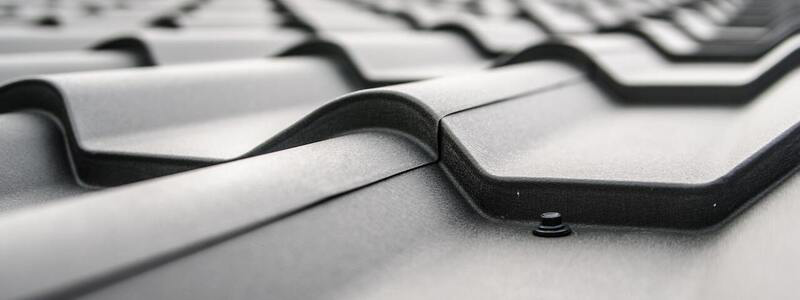
The Quest for the Longest Lasting Roof Type
Roofing materials vary widely in terms of lifespan, durability, and resilience. The longest-lasting roof type is one that strikes a harmonious balance between all these factors, providing you with decades of protection without constant maintenance or repairs. While there are several contenders, one material consistently stands out as the front-runner in terms of longevity and strength: slate roofing.
Slate Roofing: A Timeless Triumph
When it comes to a roof that’s not only built to last but also exudes an air of timeless elegance, slate roofing takes the crown. Crafted from natural stone, slate shingles offer a remarkable lifespan that can extend well beyond a century. This makes them a compelling choice for home and business owners seeking a roofing solution that doesn’t just provide shelter but tells a story of enduring quality.
What Makes Slate Roofs Last So Long?
The secret to the remarkable longevity of slate roofs lies in the material’s exceptional properties. Slate is a metamorphic rock formed from layers of sedimentary rock subjected to immense pressure and heat over time. This unique formation process results in incredibly dense slate, resistant to water absorption and impervious to temperature fluctuations. As a result, slate shingles maintain their structural integrity and appearance for decades, if not centuries.
The Perks of Opting for Slate
- Unmatched durability: Slate’s durability is practically unparalleled. It can withstand harsh weather conditions, including heavy rain, hail, snow, and high winds, without showing signs of wear or deterioration. A roof made of good slate installed properly on a strong support structure is common to last a couple of centuries or even more.
- Low maintenance: Unlike many other roofing materials that require frequent repairs or replacement, slate roofs demand minimal maintenance. The general idea is set it and forget it. Their resistance to water and other elements means you won’t have to worry about rot, mold, or other common roofing issues.
- Aesthetic appeal: Slate roofing adds an undeniable aesthetic charm to any structure beyond its practical benefits. Its natural, earthy tones and unique texture can enhance the architectural beauty of your home or business.
- Eco-friendly choice: Slate is a natural material that doesn’t require chemical treatments or manufacturing processes. Choosing slate is a sustainable choice that contributes to reducing your environmental footprint.
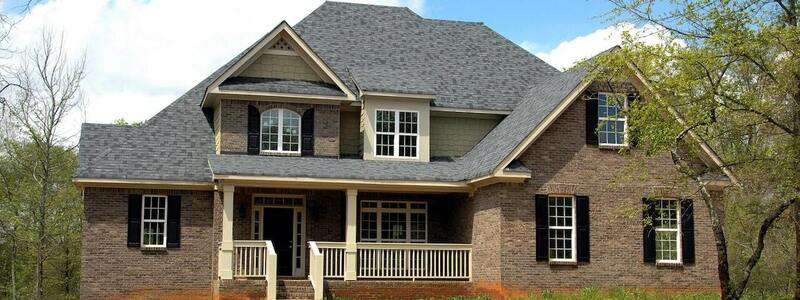
The Strength of the Alternatives
Selecting the suitable roofing material involves more than just aesthetic considerations. The decision can impact your property’s integrity, longevity, and value. When longevity is paramount, slate roofing emerges as the undisputed champion. Its innate durability, resistance to the elements, and timeless beauty make it an investment that pays dividends for generations. However, the alternatives, such as metal, concrete, and clay tile roofing, also offer impressive lifespans and unique benefits.
Metal Roofing: Enduring Excellence
Metal roofing has earned its reputation for durability by being an exceptional choice for homeowners and business owners seeking a long-lasting roofing solution. Though it feels like a modern solution, it has been around for centuries. The grayish rooftops of Paris get their color from zinc sheets first installed in the 1800s. The green color on many famous church domes is testimony to the theoretical conclusion that copper roofs can last 1000 years! And what other proud proof of copper sheet longevity than the Statue of Liberty itself?
This roofing category includes various metals, such as steel, copper and sometimes aluminum, each offering its unique benefits. Metal roofs typically provide a lifespan ranging from 40 to 70 years, contingent on factors like the specific material used and the level of maintenance upheld.
Why Metal Roofs Shine?
- Weather resilience: Metal roofs are engineered to withstand various weather conditions. They effortlessly shed snow, resist rainwater penetration, and endure high winds. This resilience makes them an excellent option for regions with extreme weather patterns.
- Durability: Metals like steel copper and aluminum possess inherent strength, ensuring that metal roofs hold up against impacts from hail, falling debris, and other potential hazards.
- Minimal maintenance: One of the key advantages of metal roofing is its low maintenance requirement. Metal roofs remain largely unaffected by these common issues, unlike materials that may succumb to rot, pests, or decay over time.
- Energy efficiency: Metal roofs often incorporate reflective coatings and various insulating layers that help reflect sunlight and heat away from the building, contributing to better energy efficiency and potential utility savings.
Concrete Tile Roofing: The Longevity of Concrete
Concrete tile roofing is a steadfast choice when longevity is a top priority. These tiles are known to endure for approximately 50 to 100 years, making them an investment that offers lasting protection. Concrete tiles are fashioned from a mixture of sand, water, and cement, which is then molded into shapes and cured to create robust roofing material.
Why Concrete Tiles Endure?
- Fire and pest resistance: Concrete tiles are non-combustible, rendering them highly fire-resistant. Additionally, their composition deters pests and rodents, enhancing the overall longevity of the roof.
- Color retention: These tiles are often pigmented with durable color coatings, which means they retain their appearance over the years, even in the face of constant exposure to the elements.
- Climate adaptability: Concrete tiles are engineered to withstand diverse climates. They can handle freeze-thaw cycles without cracking, crucial for regions prone to temperature fluctuations.
Clay Tile Roofing: The Classic Choice
Clay tile roofing carries an air of timelessness, dating back 5,000 years to glazed earthenware rooftops in China, and elegance that few other materials can match. Beyond its aesthetic allure, clay tile roofing boasts an impressive lifespan of 75 to 100 years or even more, making it a choice that resonates with history and longevity. In the quest for the longest lasting roof type, clay tile roofing is a strong candidate.
The Strengths of Clay Tiles
- Distinct aesthetic: The warm, earthy tones of clay tiles contribute to a unique Mediterranean or Spanish architectural style that enhances the visual appeal of any property.
- Weather endurance: Clay tiles are naturally resistant to extreme weather conditions, including UV radiation, high winds, and heavy rainfall.
- Fire resistance: Similar to concrete tiles, clay tiles are fire-resistant, which can provide peace of mind for homeowners concerned about fire hazards.
- Eco-friendly: Using natural clay and the absence of synthetic materials make clay tile roofing an environmentally friendly choice.
Asphalt Shingles: A Balance of Affordability and Durability
Asphalt shingles are a popular choice for their balance between affordability and durability. While they might not match the longevity of slate or concrete tiles, high-quality asphalt shingles can still offer a respectable lifespan of around 20 to 30 years.
The Benefits of Asphalt Shingles
- Cost-effectiveness: Asphalt shingles are often more budget-friendly than other roofing materials, making them an accessible choice for homeowners seeking durability without breaking the bank.
- Variety: These shingles come in a wide range of colors, styles, and textures, allowing you to find a look that complements your property’s aesthetics.
- Ease of installation and repairs: Asphalt shingles are relatively lightweight and easy to install or replace, saving labor costs during installation and any necessary repairs.
- Weather resistance: High-quality asphalt shingles are designed to withstand various weather conditions, including moderate wind and rain.
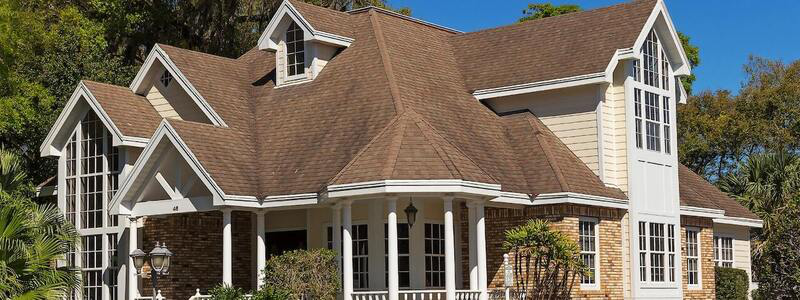
Longest Lasting Roof Type – B&M Roofing
Different roofing materials come with distinct advantages and potential drawbacks. B&M Roofing’s professionals are well-versed in the strengths and weaknesses of each material, enabling them to guide you toward the most suitable option based on your desired lifespan, aesthetic preferences, and maintenance expectations.
As you weigh your options, remember that a roof is more than just a protective covering; it’s a statement of durability, elegance, and longevity. Whether you’re looking to add character to your home or safeguard your business, the longest-lasting roof type will stand as a testament to your wise choice for years to come.
What Are Roofing Shingles Made Of
When it comes to protecting your home or business from the elements, few things play a more crucial role than the roof over your head. Roofing shingles, those overlapping, layered pieces that cover the surface of your roof, play a significant role in safeguarding your property and adding to its visual appeal. If you’ve ever asked yourself what materials roofing shingles are made of, you’re in the right spot.
In pursuing the ideal roofing solution, professional guidance can make all the difference. With an overwhelming array of roofing options and materials available, making an informed decision requires a comprehensive understanding of the unique characteristics of each material and its compatibility with your property.
Let’s look in-depth at roofing shingles, their composition, different types, and everything that falls within these categories.

What Are Roofing Shingles Made Of Today?
Roofing shingles have come a long way from their humble beginnings. Today, they’re made from various materials that offer durability, longevity, and aesthetic value. While various types of shingles exist, the most common materials include asphalt, fiberglass, wood, metal, ceramic, concrete, slate, synthetic materials like rubber and plastic, and even solar shingles. These materials are carefully chosen to provide the best combination of looks, strength, weather resistance, insulation, and overall performance.
The Most Common Roof Shingle Material: Asphalt Shingles
Asphalt shingles are the most prevalent choice for roofing materials across the United States. If one had to answer the question of “What are roofing shingles made of?” with one word, that word would definitely be asphalt. These shingles comprise fiberglass or organic mat coated with asphalt and mineral granules. They balance affordability and reliability, making them an attractive option for homeowners and business owners.
Organic asphalt shingles contain more asphalt than fiberglass shingles, so they are generally more durable in punishing weather. Being heavier, they are more likely to withstand hail and frost without cracking. But because of their organic nature, they absorb more water and may warp; being heavier than fiberglass adds load to your roof, and they are less fire resistant.
Fiberglass asphalt shingles are lighter on the supporting structures and may not be as durable in stormy conditions, but their fiberglass core lasts better than their organic counterparts.
Modern asphalt shingles are engineered to resist harsh weather conditions, UV radiation, and even the impact of hail. Their construction allows for flexibility while maintaining structural integrity, which is crucial for withstanding temperature changes and natural movements of your home.
Do Roof Shingles Contain Asbestos?
Due to its fire-resistant and insulating properties, asbestos was used in construction materials, including roofing shingles. However, since the health risks associated with asbestos became well-known, its use in building materials was phased out. Therefore, roofing shingles manufactured today do not contain asbestos. Modern shingles are made with safety as a top priority, using materials that provide protection and peace of mind.
Avoid repairing your roof by yourself; opt for an expert roofing contractor to do the job.
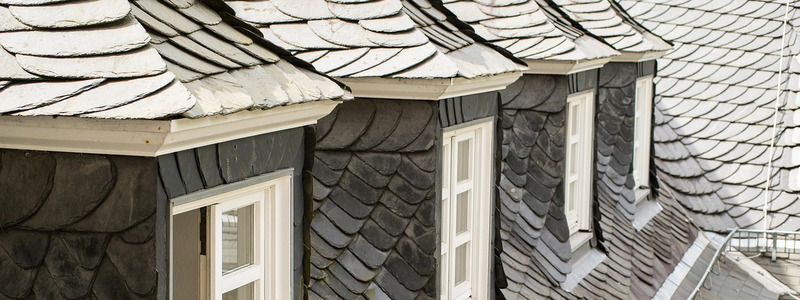
What Are Roofing Shingles Made Of Besides Asphalt?
There is a diverse range of materials for roofing shingles. From the cost-effective qualities of asphalt to the enduring elegance of slate and the resilience of metal, each material offers its own set of advantages. Let’s see the different types of roof shingles:
Asphalt Shingles:
Asphalt shingle roofs are the most affordable for materials and installation. They are the most common choice of roof replacement material or new home roof installations. There are two main types of asphalt shingles, organic asphalt and fiberglass. They both come in three-tab or architectural styles.
3-tab asphalt shingles are a decent choice when on a tight budget, but they are thinner and wear out more quickly. Architectural shingles have an extra laminate layer that gives them contours and textures and can mimic other materials, providing an affordable and elegant alternative to the traditional flat 3-tab shingle.
Wood Shingles and Wood Shakes:
Wood shingles add a touch of natural beauty to your roof. Typically made from cedar or redwood, they offer excellent insulation and a charming, traditional look. However, they require more maintenance than some other shingle types. A more rustic option is wood shakes, where the wood tiles are hand split to give a rougher classy look. Wood shakes, typically cedar being split by hand, are the thickest wood roofing material on today’s market, providing better protection against heavy rain, hail and strong winds.
Metal Shingles:
Metal shingles, often made from materials like aluminum, copper, or steel, are known for their longevity and durability. They can last several decades and provide exceptional protection against the elements. An old-time classic with many modern variations, metal roofing, can be seen on centuries-old European buildings, many old church domes and several very modern structures. Relatively easy to install and lightweight, metal shingles are a good choice, especially when the roof support system is not very strong.
At B&M Roofing, we can help you explore options that offer durability and aesthetics while remaining within your financial comfort zone.
Clay tiles:
Clay tiles are made of all-natural materials and will maintain their rich earth tones and classic appearance for 100 years. They are fire-resistant and will not burn. They do not need much maintenance, and while they are usually seen in warmer climates, they work well in most environments.
However, they can be heavy, and the supporting structure may need reinforcement before opting for the relatively permanent solution of clay tiles.
Concrete Shingles:
These shingles are known for their robust nature, offering excellent resistance against harsh weather conditions, including heavy rains and strong winds. Their weight provides stability and longevity, making them a reliable option for long-term roofing solutions.
Synthetic Shingles:
As technology advances, so do our roofing options. Synthetic shingles, made from rubber, plastic, or polymer materials, offer a range of benefits, such as affordability, lightweight construction, and ease of installation.
Rubber shingles can look very similar to asphalt shingles. Their characteristics, cost and lifespan depend on the type of rubber, from the most affordable TPO and PVC to the most expensive EPDM roof.
Composite plastic shingles are another very affordable synthetic alternative. They can be shaped and colored to imitate pretty much anything and they are very light, which makes them easy to install and very forgiving for any weaknesses of the support structure. But they are not as long-lasting as most other shingle materials and may need the most frequent replacement and repairs.
Browse through our gallery of residential roofing projects to see our work!
Slate Shingles:
If you aim for a timeless and sophisticated appearance, slate shingles might be your choice. Made from natural stone, they can last over a century or two and lend a distinctive elegance to any structure. One of the most expensive options and heavy on the support structure too, but it is still an excellent roof option if you can afford it. Many love the natural beauty of it, while others find it dull as it does not come in any varying colors or shapes.
Solar Shingles:
Though not strictly shingles, as they lie flat next to each other, solar panels can replace shingles on the south side of your roof, so we can discuss them as an option here. Their high-tech appearance can give a very pleasing contrasting combination and though one of the most expensive options, they are typically installed on the south side only or just part of it and they can significantly reduce energy bills.
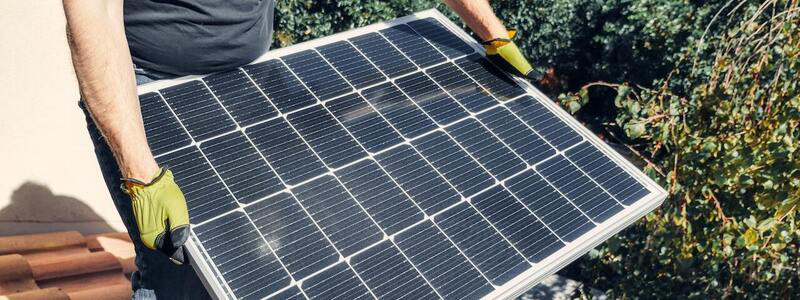
Types of Roof Shingles: Choosing the Right Material
Understanding the makeup of roofing shingles is crucial when deciding your property. From classic and reliable asphalt shingles to more intricate options like wood, metal, and synthetic materials, there is a wide variety of choices to cater to your preferences, needs, and budget. The days of asbestos-containing shingles are long gone, replaced with safer and more effective materials that ensure both the protection and the visual appeal of your home or business.
Choosing the suitable roofing material involves balancing your financial constraints and your roofing aspirations.
B&M Roofing’s commitment to quality extends beyond material recommendations. We are dedicated to employing skilled craftsmanship and utilizing high-quality materials during installation, ensuring that your chosen roofing solution is installed to last, regardless of the material you opt for.
Whether considering a roof replacement or constructing a new house, contact the B&M Roofing team for an appointment to discuss your options.
Winter Roof Repair Tips
Winter is a season of beauty and tranquility, but it can also be a time of challenges for homeowners, especially when it comes to roof maintenance. As temperatures drop and snow accumulates, roofs become more vulnerable to damage, leaks, and wear. The importance of proper care and timely repair cannot be overstated, as neglecting these aspects can lead to costly damages and safety hazards.
At B&M Roofing, we understand the unique challenges that winter brings to residential and commercial roofing. That’s why we’ve compiled a comprehensive guide to Winter Roof Repair Tips to help you navigate this season with confidence. From locating leaks to fixing worn sealants, our expert advice will keep your roof in optimal condition, ensuring warmth and safety for your family or business.
In the following sections, we’ll explore eight of our best Winter Roof Repair Tips that will guide you through the essential steps of winter roof maintenance. Whether you’re a seasoned homeowner or new to the responsibilities of property care, these tips will empower you to take control of your roof’s health during the cold months.
Remember, while these tips are designed to assist you with minor repairs and inspections, some issues may require professional intervention. B&M Roofing is always here to provide expert services tailored to your specific needs. Let’s dive into these Winter Roof Repair Tips and prepare your roof for the season ahead!
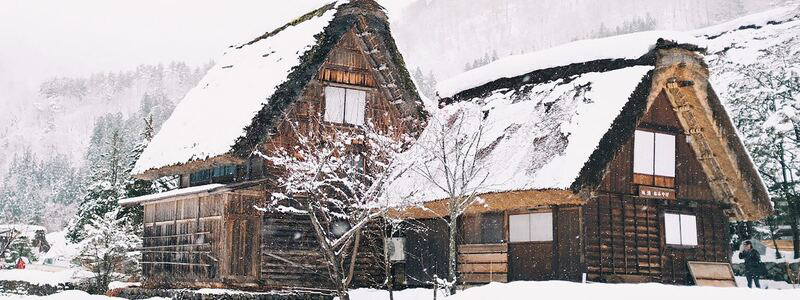
Finding the Leak
Winter weather can be harsh on your roof, leading to unexpected leaks that may cause water stains on your attic ceiling or even dripping from above. Finding the leak is the first and most crucial step in our Winter Roof Repair Tips, as identifying the source of the problem allows for targeted and effective repairs.
Signs of a Leak:
- Water stains on walls or ceilings.
- Dripping sounds or visible moisture.
- A slight draft or cold spot in a specific area.
Locating the Leak Inside:
- Inspect the part of your roof that is uphill from the stains.
- Look for roof penetrations, missing shingles, or other abnormalities.
- If you have access to your attic, locate the leak based on stains and mold on the walls.
Locating the Leak Outside:
- Cautiously inspect the roof from the outside, looking for damaged or missing shingles.
- Check for cracks or breaks around chimneys, vents, and other roof appendages.
- Consider using binoculars for a closer look without risking safety on a slippery roof.
When to Call a Professional:
- If the leak is extensive or the source is unclear.
- If you are uncomfortable or unable to safely inspect the roof yourself.
- If the leak persists after attempting a DIY fix.
Winter roof repair can be challenging, and locating a leak might require patience and careful observation. However, finding the leak is essential to prevent further damage and ensure the effectiveness of subsequent repairs. If you’re unsure or need professional assistance, don’t hesitate to contact B&M Roofing. Our experienced team is equipped to handle all your winter roof repair needs, ensuring that your home stays warm and dry throughout the season.
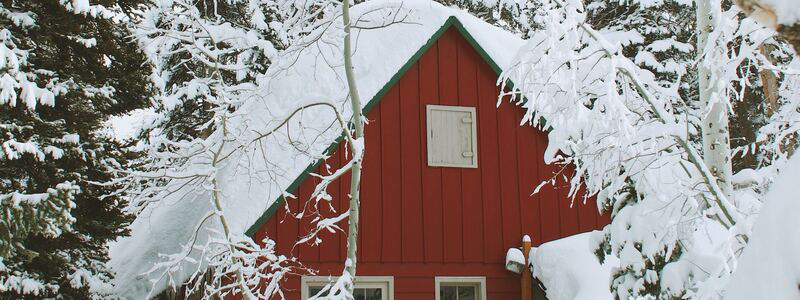
Fixing Plumbing Vent Boots
One of the common culprits behind roof leaks, especially during winter, is the plumbing vent boots. These essential components can become damaged over time, leading to unwanted moisture intrusion. In our Winter Roof Repair Tips, we’ll guide you through the process of inspecting and fixing plumbing vent boots to ensure a leak-free roof.
Understanding Plumbing Vent Boots:
- Plumbing vent boots are installed around plumbing vents, sealing the gap between the vent and the roof.
- They consist of a plastic base, metal top, and rubber boot surrounding the pipe.
- Damage to any of these parts can lead to leaks.
Inspecting the Vent Boots:
- Check the plastic bases for cracks or broken seams.
- Examine the rubber boot surrounding the pipe for tears or wear.
- Look for loose or missing nails at the base.
Repairing or Replacing Vent Boots:
- If the boot is in good shape but nails are loose, replace them with rubber-washer screws.
- If any part of the vent boot is broken or damaged, purchase a new plumbing vent boot.
- Follow the manufacturer’s instructions for installation, or consider hiring a professional if you’re unsure.
Safety Considerations:
- Always use caution when working on the roof, especially in winter when surfaces may be slippery.
Consider using a roof harness or working with a partner for added safety.
Fixing plumbing vent boots is a vital part of winter roof maintenance. While some repairs can be done on your own, don’t hesitate to reach out to B&M Roofing if the task seems too complex or if you prefer professional assistance. Our team is skilled in all aspects of roof repair, including plumbing vent boots, and we’re here to ensure your roof remains secure and leak-free all winter long.
Fixing a Leaky Chimney
Chimneys add character and warmth to a home, but they can also be a source of leaks, particularly during the harsh winter months. The flashing around brick chimneys is often susceptible to rust and damage, leading to unwanted water intrusion. In this section of our Winter Roof Repair Tips, we’ll explore how to identify and fix a leaky chimney, ensuring a cozy and dry winter season.
Identifying Chimney Leaks:
- Look for water stains or dampness around the chimney area inside the house.
- Inspect the flashing around the chimney for rust, cracks, or detachment.
- Check the mortar and bricks for signs of wear or damage.
Quick Fixes for Leaky Chimneys:
- Slip new flashing under the old rusted flashing to drive water downhill temporarily.
- Apply a waterproof sealant to small cracks or gaps as a short-term solution.
Long-Term Solutions:
- Replace the flashing altogether, ensuring proper installation and sealing.
- Consider repointing or rebuilding the chimney if the mortar or bricks are severely damaged.
- Hire a professional roofing contractor like B&M Roofing for a thorough inspection and repair.
Safety and Considerations:
- Working around chimneys can be complex and requires proper tools and safety measures.
- If you’re unsure about the repair process, it’s best to consult with a professional.
Chimneys are more than just aesthetic features; they play a vital role in venting your home. Ensuring their integrity is essential for both safety and comfort. While some minor repairs can be handled independently, a leaky chimney often requires professional attention. B&M Roofing’s experienced team is ready to assist with all your chimney repair needs, providing expert solutions that last beyond the winter season.
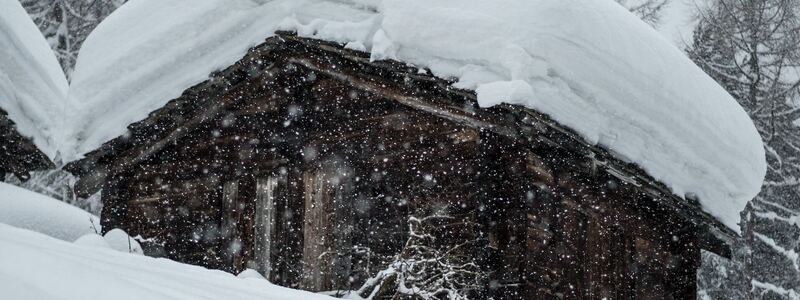
Fixing Step Flashing
Step flashing is a critical component in roof construction, especially where walls intersect with the roof. It helps in draining water downhill over the shingles, preventing leaks. However, when damaged, water can run underneath it and into your house, leading to significant problems. In our Winter Roof Repair Tips, we’ll guide you through the process of identifying and fixing step flashing to ensure a watertight roof.
Understanding Step Flashing:
- Step flashing consists of metal pieces bent at a 90-degree angle, placed between each course of shingles and the adjoining wall.
- It acts as a barrier, directing water away from the wall and onto the roof.
Identifying Damaged Step Flashing:
- Look for water stains or leaks inside the house near walls that intersect with the roof.
- Inspect the step flashing from the outside for rust, detachment, or other visible damage.
Repairing or Replacing Step Flashing:
- If the flashing is slightly damaged, it may be repaired with a roofing sealant.
- If the flashing is extensively damaged, it must be replaced.
- Carefully remove the damaged flashing and shingles, and replace them with new materials, ensuring proper overlap and sealing.
- Consider hiring a professional if the task seems complex, as improper installation can lead to further issues.
Safety Considerations:
- Use proper safety equipment, such as a roof harness, especially during winter when the roof may be slippery.
- Work with a partner or consider professional assistance if you’re unsure about the process.
Step flashing is an essential but often overlooked aspect of roof maintenance. Proper care and timely repair or replacement can prevent costly water damage inside your home. B&M Roofing is here to assist with all your step flashing needs, providing expert guidance and professional services to ensure your roof remains secure throughout the winter and beyond.
Choosing an Expert Team at Roofing
B&M Roofing has extensive experience in residential and commercial roofing, with a Colorado company providing quality service throughout the Centennial State since 1947.
The premier Colorado commercial roofing contractor uses only the highest quality roofing shingle suppliers: GAF and Owens Corning. We offer a wide range of colors and styles to choose from, ensuring that we can match the right roof shingle color to any home’s style.
We work with brands like GAF and Owens Corning to offer you a variety of roofing materials and colors to choose from and allow you to find the perfect color for your home. B&M is always available to help give your home’s roof the beauty it deserves.
How to Prepare Your Roof for Winter
As winter approaches, it is crucial to ensure your roof is adequately prepared to withstand harsh weather conditions. Properly winterizing your roof protects your home and helps maintain its structural integrity.
In this article, we will discuss key points on how to prepare your roof for winter, including tips for winterizing, protecting your roof from snow, and the best temperature for roof repairs. Considering these guidelines will help you ensure a well-maintained and durable roof throughout the winter months.
Preparing Your Roof in The Fall
Don’t wait for freezing weather. Take action when the fall arrives. Add the following to the checklist and contact a professional team to assist you with winterizing your roof:
- Inspect the roof for damage
- Clear debris and clean gutters
- Check insulation and ventilation
- Seal air leaks
- Schedule a repair or replacement if needed
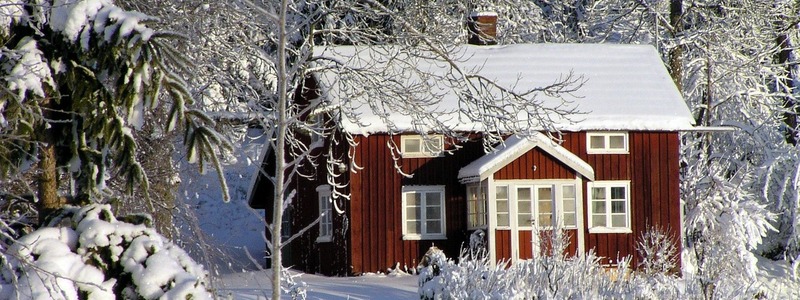
Conduct a Roof Inspection
Before winter arrives, perform at least a thorough inspection of your roof from the ground to identify any existing or potential issues. Look for obvious signs of damage, such as missing or damaged shingles, cracks, or loose flashing. Inspect the condition of your roof’s surface and pay attention to any areas of concern.
Identifying and addressing problems early on can prevent further damage during winter storms.
If you are unsure about conducting the inspection yourself, get in touch with a professional roofing contractor like B&M Roofing that can provide expert guidance and ensure a comprehensive evaluation. While inspecting your roof from the ground can provide a general overview, it is advisable to hire a professional for a more comprehensive assessment.
We have the expertise to identify potential issues that may go unnoticed by the untrained eye. By addressing these issues promptly, you can prevent further damage during winter storms and ensure the longevity of your roof.
Trim the Trees
If you have large trees around your house, plan to trim any branches that hang over your roof. During the winter, snow can accumulate on those branches, potentially causing them to break and crash onto your roof. Consider hiring a landscaping company to take care of any large branches you cannot safely reach. Trimming the trees will reduce the risk of damage and ensure the safety of your roof during winter storms
Clean and Clear Your Roof
Clearing debris from your roof is essential to prevent clogged gutters and potential water damage. If you can do it safely, remove leaves, twigs, and other debris that may have accumulated on your roof. Clean gutters and downspouts to ensure proper water drainage. Clogged gutters can lead to ice dams, which occur when melted snow freezes and forms a barrier, preventing water from flowing off the roof. Ice dams can cause water to back up under the shingles and potentially seep into your home, resulting in leaks and water damage.
Regular maintenance and cleaning will help prevent these issues and keep your roof functioning optimally.
Insulate and Ventilate Your Attic
Proper insulation and ventilation in your attic play a significant role in maintaining a warm and energy-efficient home during winter. Insufficient insulation can lead to heat loss, which can contribute to the formation of ice dams on the roof.
Check the insulation levels in your attic and consider adding more if necessary. Adequate insulation helps retain heat within your home, reducing the strain on your heating system and minimizing the risk of ice dams.
Furthermore, ensure that your attic is adequately ventilated to regulate temperature and humidity levels. Proper ventilation helps prevent excess moisture buildup, which can lead to mold growth and potential roof damage.
Seal Air Leaks
Air leaks in your home can contribute to heat loss and increase your energy bills. Inspect your roof and attic for gaps, cracks, or openings where warm air can escape.
Common areas for air leaks include around chimneys, vents, and attic hatches. Seal these areas with weatherstripping, caulk, or spray foam insulation to improve energy efficiency and reduce the chances of ice dam formation on your roof.
By sealing air leaks, you create a more airtight and well-insulated environment within your home, helping keep it warm and comfortable during winter.
Consider Roof Repair or Replacement
If your roof has significant damage or is nearing the end of its lifespan, it may be wise to consider repairs or replacement before winter arrives. Cold weather can make roofing tasks more challenging, and some roofing materials have temperature limitations for installation. If there are visible signs of damage, such as missing or damaged shingles, leaks, or sagging areas, consult with a professional roofing contractor to determine the best course of action.
At B&M Roofing, we can assess the condition of your roof and provide recommendations for repairs or replacement based on your specific situation.
How to Protect Your Roof from Snow
Heavy snowfall can stress your roof significantly, potentially leading to structural damage. To protect your roof from the weight of accumulated snow, consider installing snow guards. Snow guards are devices that are strategically placed on your roof to prevent large amounts of snow from sliding off all at once. By holding the snow in place, they reduce the risk of injury from falling snow and minimize the strain on your roof.
Snow guards also allow the snow to melt and drain more gradually, preventing the formation of ice dams.
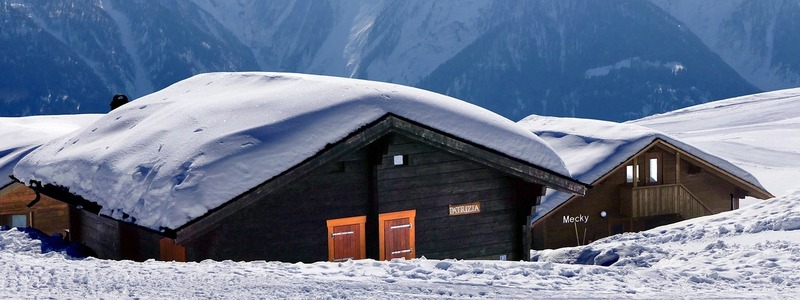
Ideal Temperature for Roof Repairs or Replacement
Roofing materials have specific temperature requirements for installation. Cold temperatures can make shingles and other materials brittle, making them more prone to damage during installation. It is generally recommended to avoid roofing tasks when the temperature falls below freezing (32 degrees).
Professionals have the expertise and knowledge to determine the best temperature and weather conditions for successful roof repairs or replacement. Do not, however, wait for everything to freeze before you call.
Why Not Do It Myself?
There are several reasons not to attempt DIY roof inspections and repairs. DIY inspections and repairs are very unlikely to save you money. They will surely leave issues unaddressed, your roof vulnerable to the elements and may shorten your roof’s lifespan, resulting in an urgent and premature need for roof replacement.
Risk
Walking around on your roof can be extremely dangerous, even for experienced individuals. Professional roofing contractors undergo countless hours of safety training, use special safety equipment to minimize risks, and still, accidents happen. No amount of money saved is worth risking your life.
Don’t hesitate to reach out to our expert team; we have the training and experience to inspect and repair your roof correctly. We know how to spot damage and how to make appropriate repairs to save you from urgently having to pay for things that could be avoided.
Material Warranty
Moreover, manufacturers of roofing materials require a licensed roofing contractor to install their materials for said material to qualify for their warranty. On the off chance you were to tackle your DIY roof repair successfully, you’ll have missed out on these warranties. If and when your repairs go bad, you’ll be stuck paying for more materials or, worse, for a completely new roof.
DIY roof repair isn’t worth the accompanying headache. At B&M Roofing, you get a licensed roofing contractor to perform biannual roof inspections safely.
Allow trained eyes to spot unseen wear and tear. Rest peacefully, knowing that your roof is in good shape as it endures season after season. The peace of mind from a qualified licensed contractor’s genuine interest in your well-being is abundant.
What Roof can Withstand Extreme Weather?
Some roofs fit into snowy conditions in Colorado more than others.
- Metal roofs can handle heavy snow and allow it to slide off easily.
- Cement roofs, although less common due to their cost, offer great protection against snow. They are durable and can resist moisture.
- Slate roofs are both beautiful and strong, capable of withstanding snow and ice. However, slate is expensive.
Overall, these roofs provide durability and resilience against the snowy weather conditions in Colorado.
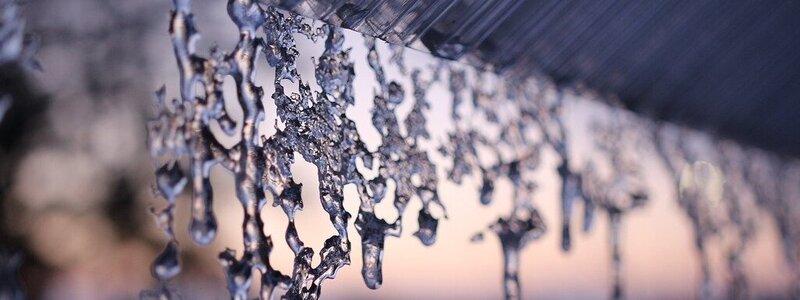
Inspect and Prepare
Preparing your roof for winter is essential for its longevity and for protecting your home from the elements. Adhering to temperature guidelines while planning roofing tasks ensures optimal results. With proper preparation, your roof will withstand the winter season, providing you with peace of mind and a comfortable living environment.
Our professional team has the experience to inspect, repair and replace your roof. Contact us to discuss how we can help you, schedule a convenient time to visit your house, and allow our team to give you customized solutions.
B&M Roofing Colorado’s Most Trusted
If you think it’s time to replace your roof, regardless of the size of your home, this is an important decision that you should not rush into. You need to make sure you choose the right roofing installation company, that the roof is installed correctly and that the weather cooperates during the replacement process.
For more information about roof maintenance, repair, or replacement. Call us at 303-816-0068 or fill out a contact form.
Roof Overlay vs Tear Off
There are many good reasons to replace your worn-out roof. You provide better protection from the weather. Failure to replace a damaged or aging roof can result in moisture buildup. Molds, mildew, bacteria, and standing water may cause health hazards or erode the structure of your house.
A new roof increases the value of your home and adds to its curb appeal for resale purposes. IKO.com cites a new roof as a powerful marketing tool in adding to your home’s value.
The National Association of the Remodeling Industry estimates that a new roof will recoup nearly 70% of the cost when you sell your house.
If your roof is showing signs of wear, you have two options: Roof overlay vs tear off. Each has advantages and disadvantages.
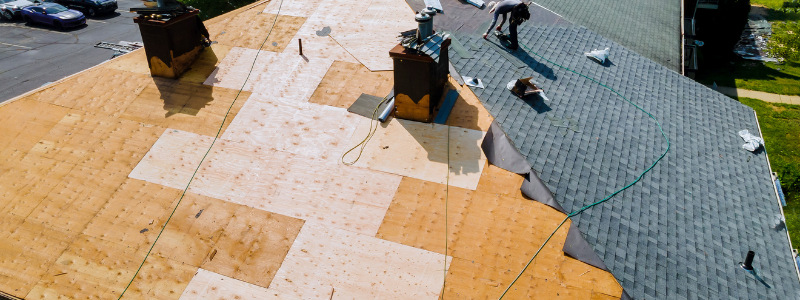
Reroofing and Roof Replacement
The Miriam Webster Dictionary defines reroofing as the process of recovering or replacing an existing roof material or replacing all parts of the roof of a building. Depending on the amount of damage to the roof, a roof replacement is the best option.
Reroofing Options
If you choose roof overlay, professional roofers will simply install an additional roof covering over the existing roofing material without removing the layer already in place. However, if you choose to tear off, the roofers will remove the existing damaged or worn material and replace it with new roofing materials.
What is Roof Overlay?
An overlay roof, or the process of overlaying a roof, occurs when a roofing technician puts another set of roofing materials directly on top of the existing roof.
Roof overlay isn’t the most common method of roofing repair or replacement but it is one option.
Difference Between Overlay vs. Tear Off
When the tear-off option of roof replacement is chosen, roofing specialists tear off the existing roofing material and put on a new one. Whereas with overlay, they do not remove the roofing materials first.
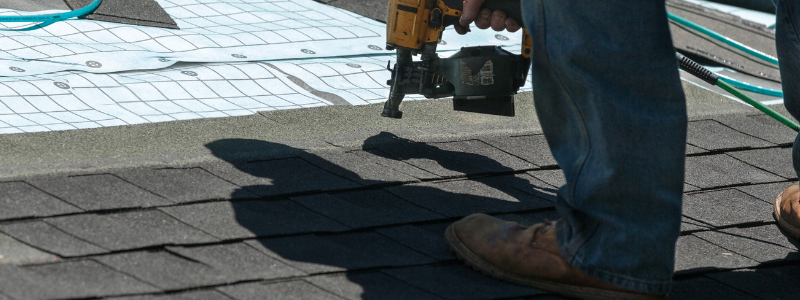
Advantages of Tear Off
Select New Material
With a roof tear off occurs, every part of the roofing material is replaced with new materials. If your decking or underlayment were deteriorating, that problem will be solved. Your roofer can also find and repair any developing cracks, holes, or leaks. This protects your whole home from mold, mildew, and rot.
Upgrade Materials
Construction companies build to sell. Often, they don’t use the highest quality materials. If you are replacing a roof, you can upgrade the roofing materials.
With expert input from your roofing company, you can choose the best materials for your roof. You could upgrade the oriented strand board to CDX plywood decking. You might opt for synthetic roof underlayment instead of standard-issue felt.
Respond to Climate Conditions
Colorado has challenging weather conditions. Your roof may have to withstand extremes of cold and heat. Heavy rains and snow challenge roofing materials. When you repair or replace your roof, you can choose the best materials for your climate conditions. This will improve the heating/cooling efficiency and save you money on your energy bills.
Add More Durability
When your roof is made of all-new materials, it will last longer and will be more durable to wind, heat, and water challenges.
When old materials are torn off, your roofing specialist has a chance to examine the structure of the roof. If needed, repairs can then be made. This means serious damage is often averted.
Increase Roof Life
With the installation of a new roof, the materials can last twenty to thirty years. This is up to ten years more than the expected life of an overlay.
Improve Assessed Property Value
Realtors estimate that a new roof can add over $10,000 to your home’s resale value. A new roof is a strong selling point. While an overlay offers a fast, inexpensive fix, a tear off is a smart choice. It increases the appraised value of your home.
Disadvantages of a Tear Off
Increased Cost
It is estimated that a tear off roof replacement will cost a quarter more than an overlay. Labor costs include completely removing the existing roofing material and replacing the layers removed.
Waste Removal
The old roofing must be disposed of. This adds to the time and labor costs. It also creates clutter and potential injury to shrubs, lawns, and homeowners.
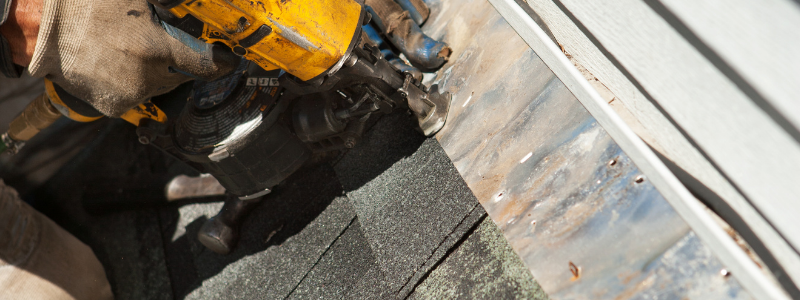
Advantages of a Roof Overlay
Overlays are Less Labor Intensive
Roofing companies may suggest putting a new layer of shingles over an existing layer. This takes significantly less time. The old roof doesn’t need to be torn off. Thus, the time to replace the roof is cut by at least 25%.
Overlays are Faster
An overlay can be finished days sooner. That is time you won’t be inconvenienced by having to be away from or trapped inside your house.
Overlays are Less Expensive
Estimates indicate that an overlay is at least 25% less expensive than a tear off.
A Roof Overlay is Easier
Overlays eliminate collecting and disposing of old roofing materials. There’s no need to order, store, and get rid of a dumpster to collect old roofing materials.
Roof overlay is Safer
With an overlay, there is no danger of falling roofing materials or roofing nails that could get stepped on.
Overlays have a Viable Life
An overlay is a viable option if the existing roofing materials have not already been overlaid. Home Reference.net notes that on average you can expect the overlay to last for fifteen or sixteen years.
Overlay Shingles are Guaranteed
The shingle warranty is the same whether the roof is a total replacement or an overlay.
Overlays are Great for Quick Sales
If you are planning to sell the house, using an overlay will significantly cut the cost of roof replacement. Roof overlay is a faster, cheaper, more short-term remedy.
Disadvantages of Overlays
Possible Increased Costs
One thing to consider is the possible long-term bad effects of an overlay. It is possible that what seemed like an economical way to repair your roof could end up costing you more money.
Weight Safety Factor
Another consideration is the weight factor. If your present roof is losing granules and you put a new roof on top, this adds stress to the roof structure. The original design may not be able to bear the extra layer.
Structural Problems Could be Missed
By using the overlay option, you don’t have an opportunity to examine the condition of the roof structure. It may be rotted or damaged. There may be holes or weak spots in the underlayer that need to be reinforced or replaced.
Roof Parts Could be Compromised
When you opt for an overlay instead of a tear off the flashings around the sidewalls and roof penetrations may be compromised. This will allow water to get into your house. It may also rot the roof structure.
Roof Overlay vs Tear Off
When it comes to deciding between roof overlay vs tear off, there’s one option that is the better, more sustainable route. Many roofing companies (including us) do not recommend layering a new roof on top of the existing roof material. While roof overlay is a short-term, economical solution, it may not be the safest one for your home or your family.
Good roofing practice would be a complete tear off vs a roof overlay. By tearing off the old roof, you have a chance to examine the roof structure and make repairs if any are needed. When you overlay, you are trusting that there is no sheathing rot, or ice, or water damage. If you are certain that there are no leaks, cracks, or rot, then overlay might be the way to go.
By choosing overlay over tear off you aren’t giving yourself an opportunity to install an ice and water-leak barrier. This could result in leakage under the old roof.
FAQ: Roof Overlay vs Tear Off
What is the difference between roof overlay and tear off? Roof overlay involves installing a new layer of roofing materials directly over the existing roof, without removing the old materials. Tear off, on the other hand, involves completely removing the existing roofing materials and replacing them with new ones.
Which option is recommended by roofing experts? In general, most roofing experts recommend tear off as the better, more sustainable option. It allows for a thorough inspection of the roof structure and the opportunity to address any underlying issues. However, if the existing roof is in good condition with no leaks, cracks, or rot, overlay may be a viable choice.
What are the advantages of tear off? Tear off offers several advantages, including:
- Ability to select new materials and upgrade the roofing system
- Improved response to climate conditions and increased durability
- Longer roof lifespan compared to overlay
- Enhanced assessed property value and potential for higher resale value
What are the advantages of roof overlay? Roof overlay has certain advantages, including:
- Less labor-intensive and faster installation process
- Lower overall cost compared to tear off
- Easier disposal of old roofing materials
- No risk of falling roofing materials or nails during installation
Are there any disadvantages to tear off? Tear off does have a few disadvantages to consider, including:
- Increased cost due to complete removal and replacement of roofing materials
- Waste removal, which adds to the time, labor, and potential clutter
What are the disadvantages of roof overlay? Some potential drawbacks of roof overlay include:
- Possible long-term effects that may end up costing more money
- Weight safety factor, as adding another layer may stress the roof structure
- Missed opportunities to identify underlying structural problems
- Compromised roof parts, such as flashings, which may lead to water damage
Which option is more cost-effective? Roof overlay is generally less expensive compared to tear off since it requires less labor and materials. However, it’s important to consider the long-term costs and potential risks associated with overlay.
How long does an overlay last? On average, an overlay can be expected to last around fifteen to sixteen years, provided that the existing roofing materials have not already been overlaid.
Can an overlay be a good option for a quick house sale? Yes, if you are planning to sell the house in the near future, opting for a roof overlay can significantly reduce the cost of roof replacement. It provides a faster and cheaper solution for short-term needs.
Can an overlay compromise the roof’s ability to prevent leaks? Yes, by choosing an overlay instead of a tear off, you may miss the opportunity to install an ice and water-leak barrier. This could potentially result in leakage under the old roof.
B&M Roofing and Residential Roofing
B&M Roofing has extensive experience in residential and commercial roofing, with a Colorado company providing quality service throughout the Centennial State since 1947.
The premier Colorado commercial roofing contractor uses only the highest quality roofing shingle suppliers: GAF and Owens Corning. We offer a wide range of colors and styles to choose from, ensuring that we can match the right roof shingle color to any home’s style.
We work with brands like GAF and Owens Corning to offer you a variety of roofing materials and colors to choose from and allow you to find the perfect color for your home. B&M is always available to help give your home’s roof the beauty it deserves.
